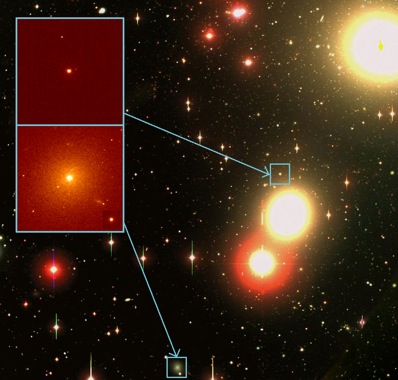|

Top Stories

|

|
 |
 |


Wall of gas divides
cosmic metropolis
...A new study from the Chandra X-ray Observatory unveils the star-forming factory NGC 604 as a divided neighbourhood...
read more

Supermassive black holes not guilty of shutting down star formation
...Galaxies cease star formation long before their supermassive black holes have the power to do the job themselves...
read more

C1XS takes first taste of lunar X-rays
...The UK-built C1XS instrument flying aboard the Chandrayaan-1 orbiter has successfully detected its first X-ray signature from the Moon...
read more
|
 |
 |

|
Spaceflight Now +

|

|
 |
 |

Subscribe to Spaceflight Now Plus for access to our extensive video collections!
 How do I sign up? How do I sign up?
 Video archive Video archive

STS-120 day 2 highlights

Flight Day 2 of Discovery's mission focused on heat shield inspections. This movie shows the day's highlights.

 Play Play

STS-120 day 1 highlights

The highlights from shuttle Discovery's launch day are packaged into this movie.

 Play Play

STS-118: Highlights

The STS-118 crew, including Barbara Morgan, narrates its mission highlights film and answers questions in this post-flight presentation.

 Full presentation Full presentation
 Mission film Mission film

STS-120: Rollout to pad

Space shuttle Discovery rolls out of the Vehicle Assembly Building and travels to launch pad 39A for its STS-120 mission.

 Play Play

Dawn leaves Earth

NASA's Dawn space probe launches aboard a Delta 2-Heavy rocket from Cape Canaveral to explore two worlds in the asteroid belt.

 Full coverage Full coverage

Dawn: Launch preview

These briefings preview the launch and science objectives of NASA's Dawn asteroid orbiter.

 Launch | Science Launch | Science

 Become a subscriber Become a subscriber
 More video More video

|
 |
 |

|
|
 |

Early stars formed
galactic ‘jam’
BY KULVINDER SINGH CHADHA
ASTRONOMY NOW
Posted: 13 February, 2009
Stars in the early Universe, particularly in ultra-compact dwarf galaxies (UCDs), could have been crammed a thousand times closer together than they are today, according to a team of scientists from the University of Bonn in Germany.
If the same situation applied in the Milky Way then, as an example, the closest star to the Sun, Alpha Centauri (which lies 4.2 light years away), would have ended up only 6.7 times further away from us than Pluto is. Team member Joerg Dabringhausen sums it up by saying, "Billions of years ago, UCDs must have been extraordinary. To have such a vast number of stars packed closely together is quite unlike anything we see today. An observer on a (hypothetical) planet inside a UCD would have seen a night sky as bright as day on Earth."

Image showing the location of two ultra compact dwarf galaxies. Image: Michael Hiker (Bonn University)/Michael Drinkwater (University of Queensland).
This situation is thought to have existed in UCDs, which were discovered in 1999. Ultra compact dwarfs are thought to be the dense cores of elliptical galaxies that collided, stripping away the remaining gas. This would have left an object 60 to 200 light years across and typically containing 100 million stars (for comparison, the Milky Way is 100,000 light years in diameter and contains between 200 – 400 billion stars). But UCDs have much higher masses than are observed from their stars’ light, which has led to the idea that they contain large amounts of unseen dark matter.
However, it’s unclear whether dark matter can accrue in sufficient quantities to explain what’s observed and Professor Pavel Kroupa and colleagues from Bonn University have a different angle on things. With so many stars crammed into such a confined space (as much as a million per cubic light year), mergers between them would have been highly likely to occur, like drops of water coalescing. This would have created enormous stars that devour their hydrogen fuel in a short space of time, before destroying themselves in supernova explosions.
These would leave behind dense neutron stars or black holes with powerful gravitational fields. And in a place with lots of supernovae, there would be lots of these objects. Effectively, UCDs could be likened to a galactic ‘jam’. |
 |
 |
 |
|
|



